FEATURED IMAGE: Wedding Palanquin. Collection National Folk Museum of Korea, Seoul.
A palanquin is a covered litter, typically designed for a single passenger, and it is carried by an even number of bearers, usually two. The term is derived from the Sanskrit word “palyanka“, which means bed or couch.
Palanquins come in various sizes and levels of grandeur. The smallest and simplest type consists of a cot or frame suspended by its four corners from a bamboo pole, carried by two bearers. Larger palanquins are rectangular wooden boxes measuring eight feet in length, four feet in width, and four feet in height, featuring openings on each side covered by curtains or shutters.
In Korea, wooden litters known as “gama” were used to transport royalty and aristocrats. Gamas were primarily reserved for royalty and government officials and were divided into six different types, each designated for various government official rankings. In traditional weddings, the bride and groom were conveyed separately to the ceremony in their respective gamas. Due to the challenging mountainous terrain of the Korean peninsula and the absence of paved roads, gamas were preferred over wheeled vehicles.
Palanquins can be classified into two categories: “roofed” palanquins and “open” palanquins. Open palanquins are referred to as “Pyeong-gyoja“.
TYPES OF PALANQUINS.
- “Yeon” (輦) and “Gago” (駕轎): These palanquins are used by the king. The “Gago” is exceptionally long, and the design of the bridge is intended to prevent the palanquin from shaking when carried by two horses with a person in front and behind.
- “Deng“: A palanquin typically carried by a princess or a prince.
- “Sain-gyo” (Four-Person Carriage): A palanquin used by second-rank officials, government ministers, prime ministers, or by a bride on her wedding day when she travels from her parents’ house to the wedding hall.
- “Satgat” Palanquin: A palanquin-shaped structure surrounded by a white curtain, primarily used during funerals.
- “Choheon” (軺軒): A single-wheeled palanquin carried by second-rank officials.
- “Namyeo” (藍輿): A chair-shaped palanquin on which Chamui and Seungji of the 3rd rank are carried.
- “Pyeonggyoja“: A palanquin carried by officials of the first rank or higher, ministers, and senior ministers aged 60 or older.
- “Jangbogyo“: A palanquin built on four pillars and adorned with curtains on all four sides, allowing for flexible decoration and disassembly. It was mainly used by low-ranking officials.
- “Chaeyeo” and “Gyaja“: Palanquins used for transporting goods.
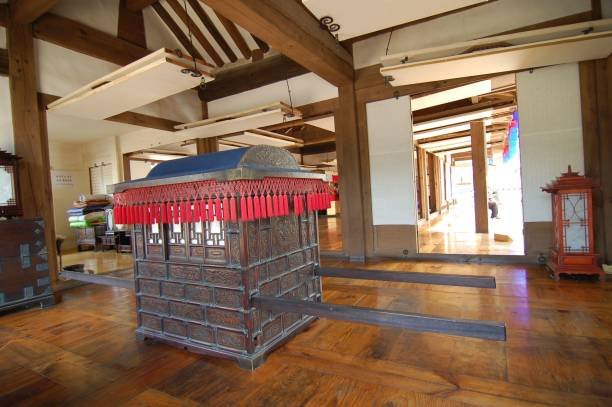
“A palanquin was used to transport the bride to the groom’s home after the wedding ceremony. This traditional mode of transportation took the form of a small litter mounted on horizontal poles and was carried by a group of bearers on their shoulders.
During the sinhaeng (Korean: 신행, Chinese: 新行), which was the post-wedding journey of the bride to the groom’s home, the bridal palanquin was adorned with a cotton band tied in an X-shape all around the vehicle, except for the front, or it could be covered with a tiger skin on top. It was splendidly decorated with multiple colors, tassels, and pictures of a pair of birds, animals, or fish to express wishes for the couple’s conjugal harmony and fertility. There is a saying that goes, ‘The couple will not share happy years together if one of the bridal palanquin’s poles is broken.’ The bridal palanquin was also referred to as a ‘flower palanquin’ (kkotgama), although not all flower palanquins were exclusively meant for brides. In contrast, the bridegroom sometimes used his own palanquin for the post-wedding journey home instead of riding a horse, which was more common. The bridegroom’s palanquin usually featured minimal decoration.” (Author: Kang Jaechul)




“In a traditional wedding, the procession of a bridal palanquin resembled that of the nobility. On their wedding day, commoners were elevated to the status of noblemen and had the privilege of riding a palanquin, typically reserved for the upper classes. The bridegroom led the procession, while bearers carried the bridal palanquin. They were followed by senior family members of the newly-wed couple, ceremony attendants, porters, lantern carriers, and others.
The newlywed couple was treated as esteemed members of society in all respects, including their attire, pumseok (Korean: 품석, Chinese: 品席, meaning ‘rank cushion’), and pumdeung (Korean: 품등, Chinese: 品燈, meaning ‘rank lantern’), which were strictly regulated based on social status. The bride was adorned with makeup and splendid clothing, including the hwarot (Korean: 활옷, Chinese: 闊衣, ceremonial robe), akin to that of a princess. The bridegroom departed for his home, wearing dallyeong (Korean: 단령, Chinese: 團領, a robe with a round neckband), along with a hat, belt, and boots.
The choice of materials for cushions varied according to official rank, ranging from leopard skin to tiger, dog, and lamb. However, the bridal palanquin was adorned with tiger skin, typically reserved for high-ranking officials. Similarly, the color of lanterns used was determined by rank. An exception was made for the bridal procession, which featured blue and red lanterns (cheongsadeungnong) similar to those used by high-ranking officials. This custom associated with the bridal palanquin and procession offers a glimpse into the ruler’s affection for the people.” (Author: Kang Jaechul)
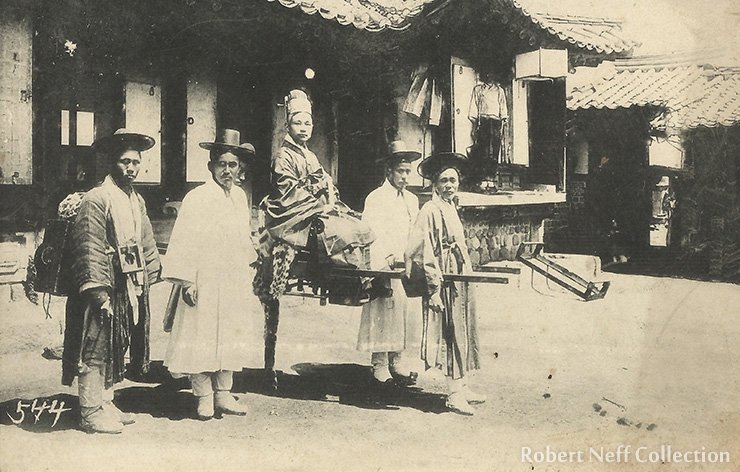
Robert Neff Collection.

early 20th century.
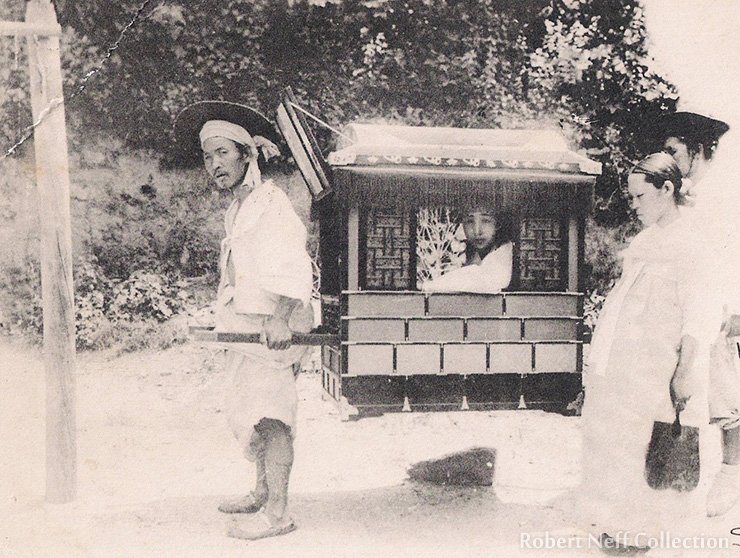

Robert Neff Collection.
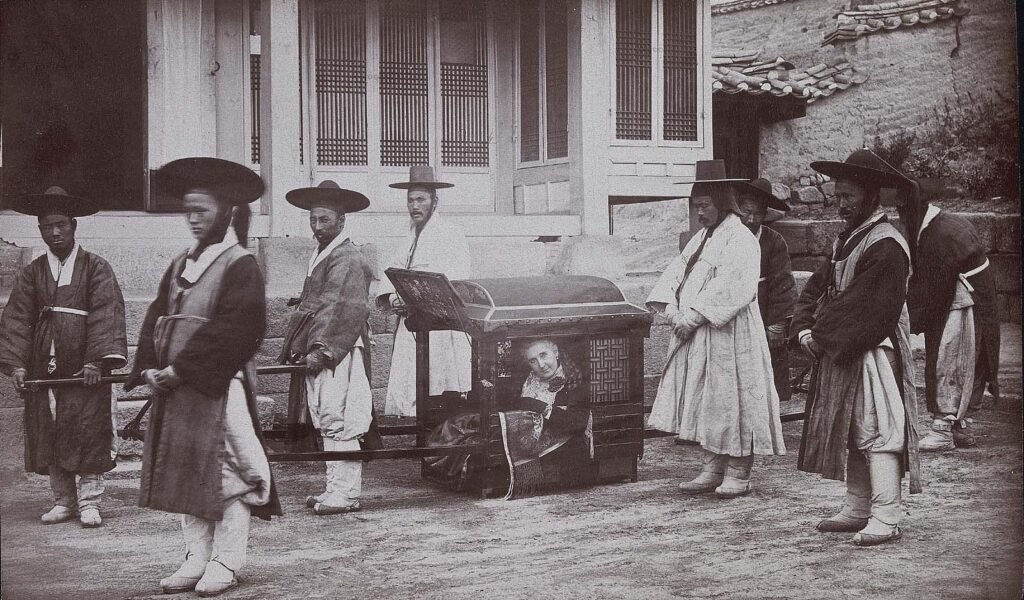
Photo dated 1884.
Collection Boston Museum of Fine Art. USA.
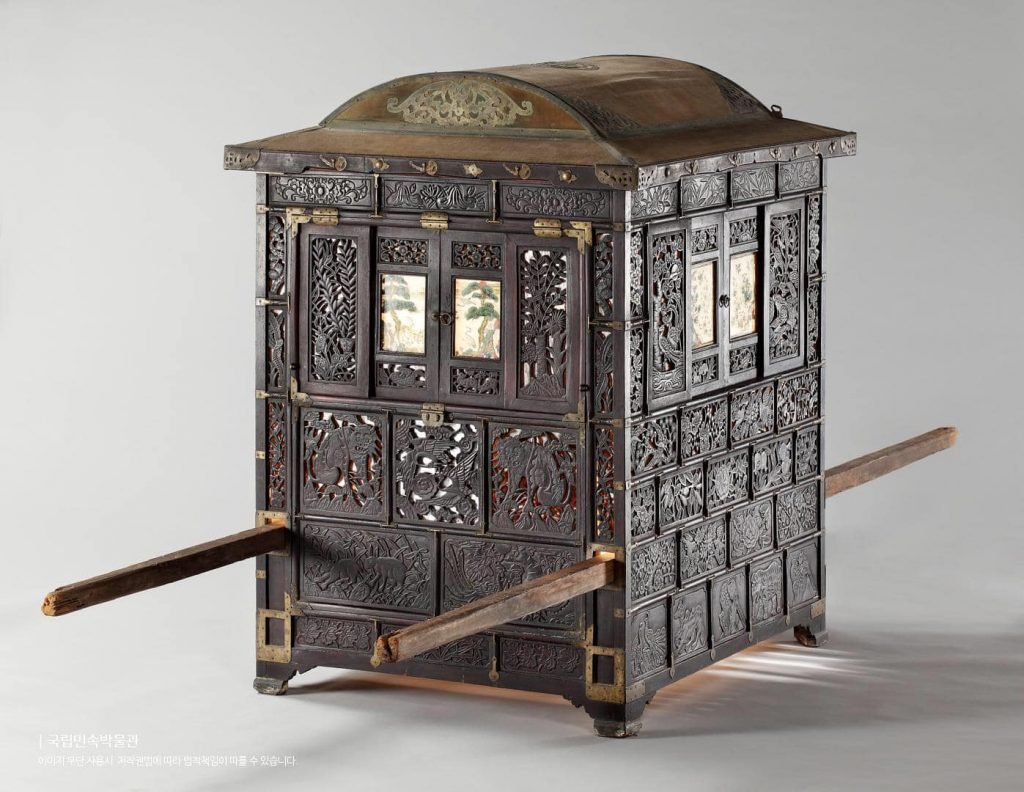
Collection National Folk Museum, Seoul.

“Palanquin of a king, 1800–1900. Korea. Lacquered and gold-painted wood, silk, metal, cotton.
Collection: National Palace Museum of Korea.”

117cm x 104cm x 88cm.
Collection National Folk Museum of Korea.

Literally meaning a “fourman palanquin,” Collection of the National Museum of Korea.
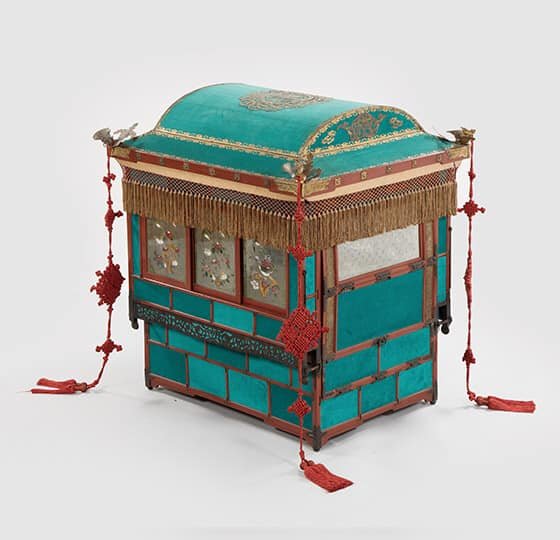
Literally meaning a “fourman palanquin,” the name derives from it being carried by four carriers.
Saingyo were mostly used by women of high status on their weddings and decorated with a design of the 10 traditional symbols of longevity (sipjangsaeng).
Collection of the National Museum of Korea.

Collection: Bupyeong Station, Korea.

Collection: Cheonan Museum, Korea.
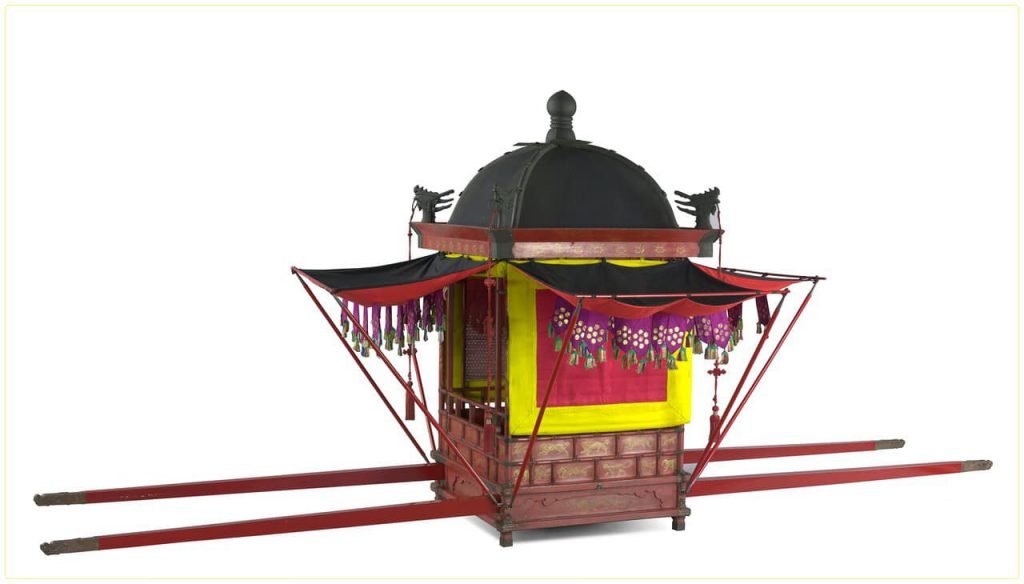
National Palace Museum of Korea.
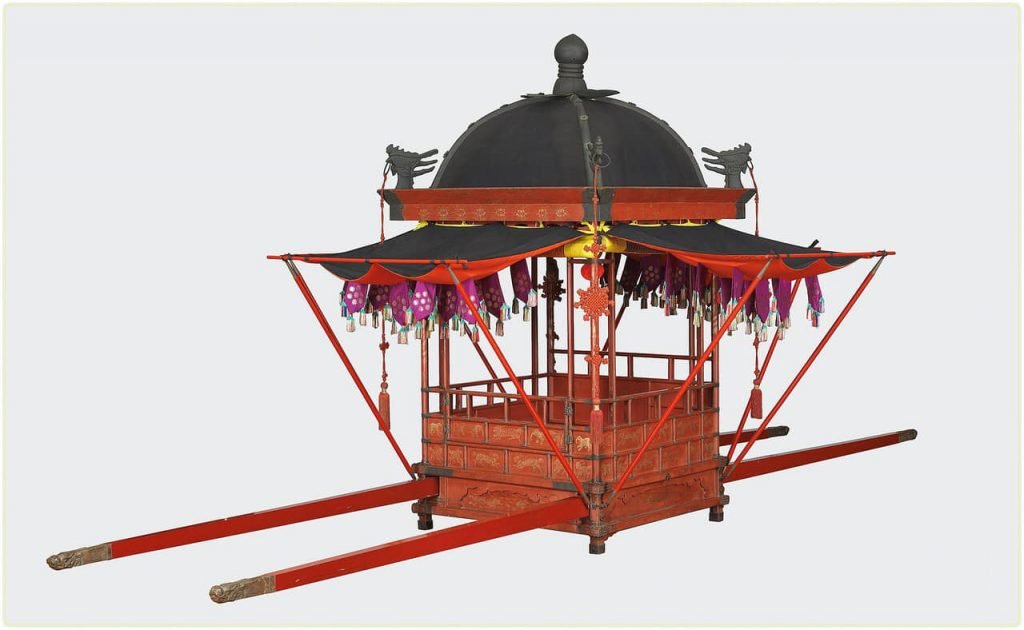

Collection: Andong City Folk Museum, Korea.

Collection: Miribeol Folk Museum, Korea.
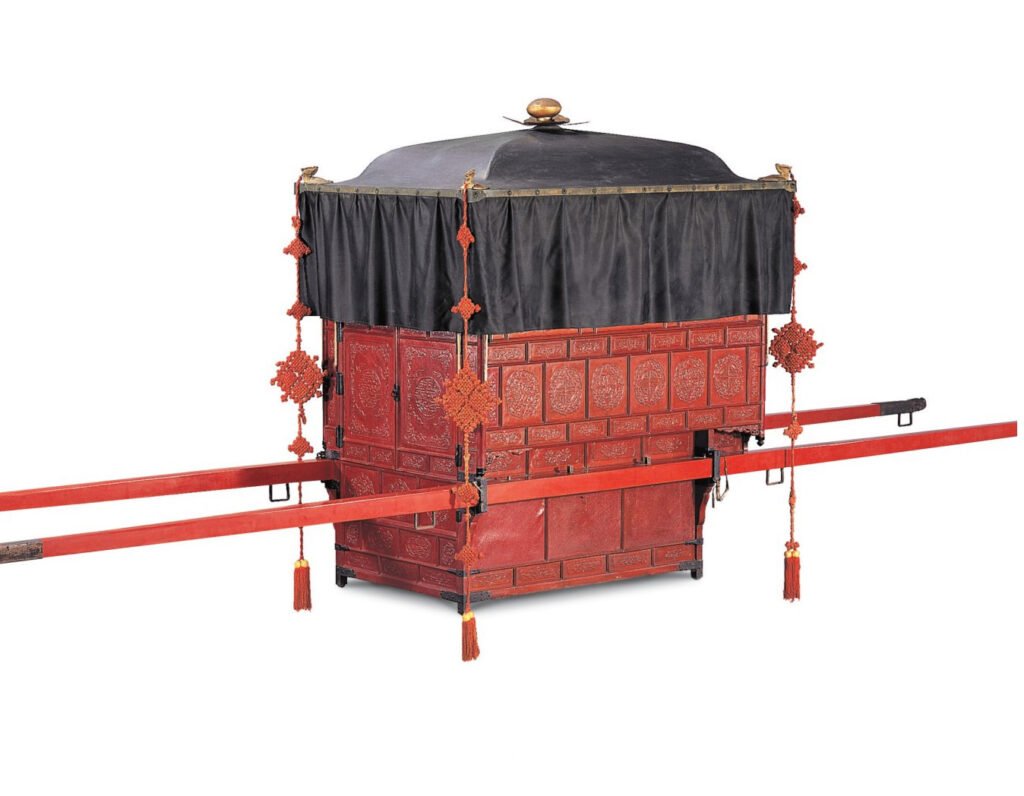
The palanquin for the royal princess is red-lacquered overall and decorated with relief carvings at the front and railings, at the sides below the windows. The windows are double and the inner sliding window is decorated with an openwork vine design. A black silk awning hanging down from the roof covers the windows. The poles are fixed with separate rings and the ends are decorated with dragon heads ornaments.
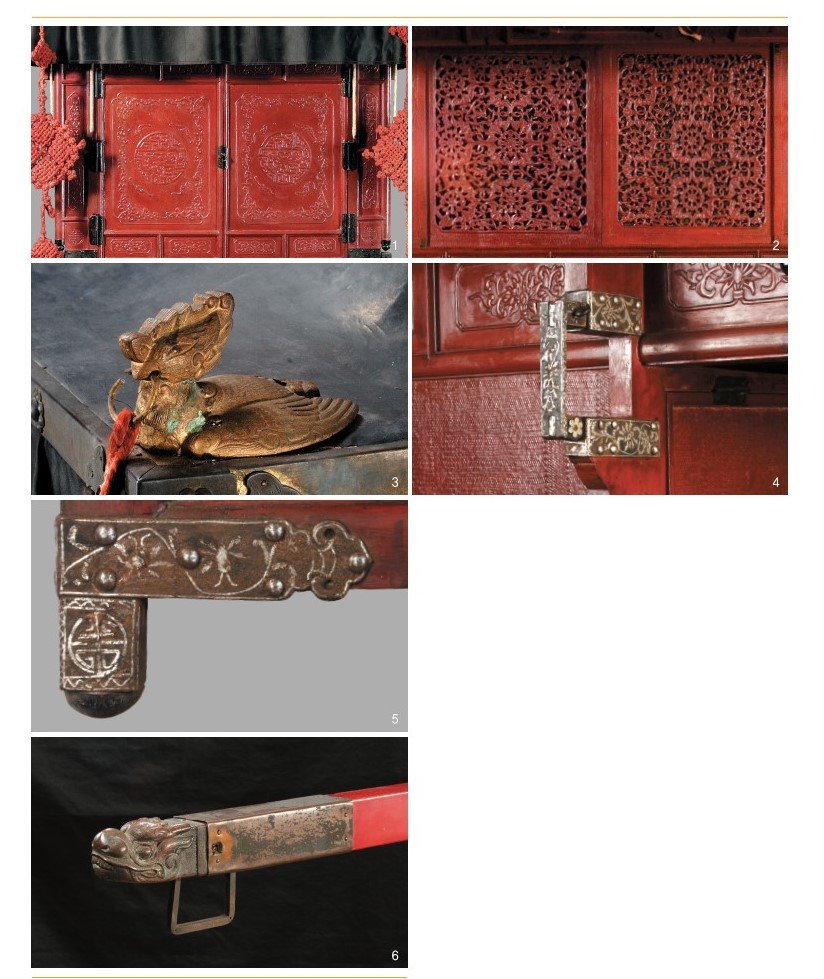

This palanquin was modestly decorated and smaller compared to other royal palanquins. It was carried either by four, six or eight men. This four-man palanquin is lacquered in red, has a box shaped body with three panel sliding windows on the three sides, a door in front and railings on the lower body. It was decorated with patterns such as mushrooms, scrolls, bats and lighting on the back and sides, and tassels on the eaves.
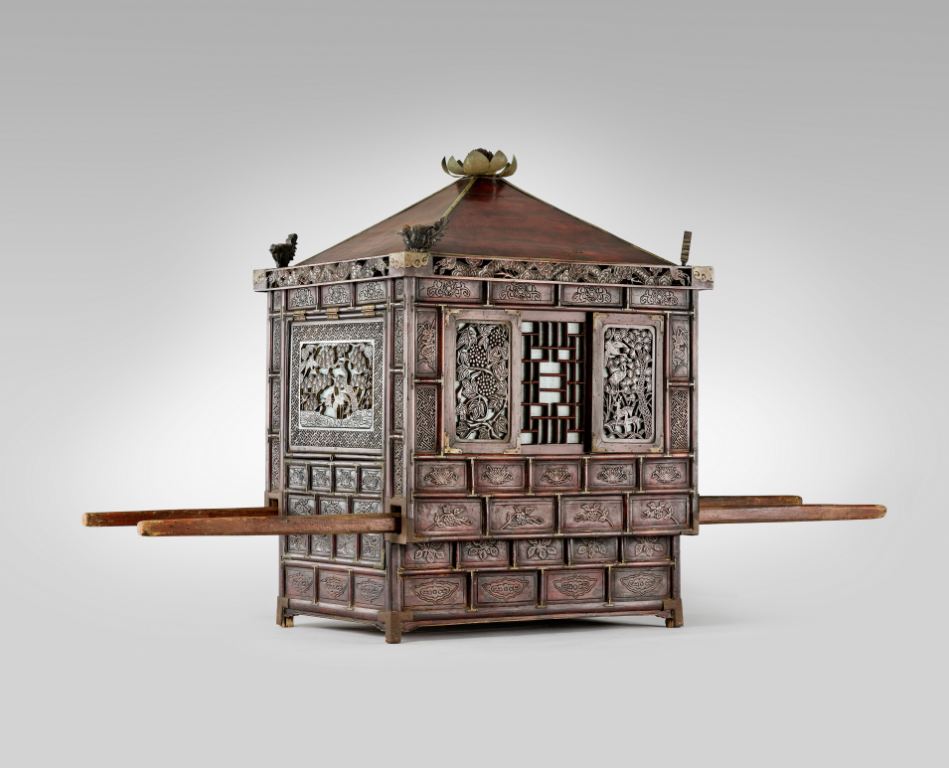
The 53rd My Art Auction, Seoul, Korea.
Date: September 12, 2024.
This palanquin is decorated with lotus flowers and phoenixes on the roof, with a dragon carved in openwork just below it. Various plants are designed beneath that, including grapes and longevity patterns, while the lowest part features an ansang pattern. It is believed that this palanquin was used by royal concubines and princesses, known as Deung or Deungcha. Deung were used by royal women when entering or exiting the palace, and it was also the type of palanquin used in 1847 when King Heonjong welcomed Lady Gyeongbin Kim (慶嬪 金氏, 1831-1907) as a concubine. This palanquin is in excellent condition, with even the flower-patterned stones inside well preserved.
[Reference] Je Song-hee, “A Study on the Palanquins of the Joseon Royal Family,” Korean Culture, 70, Kyujanggak Institute for Korean Studies, Seoul National University, 2015.

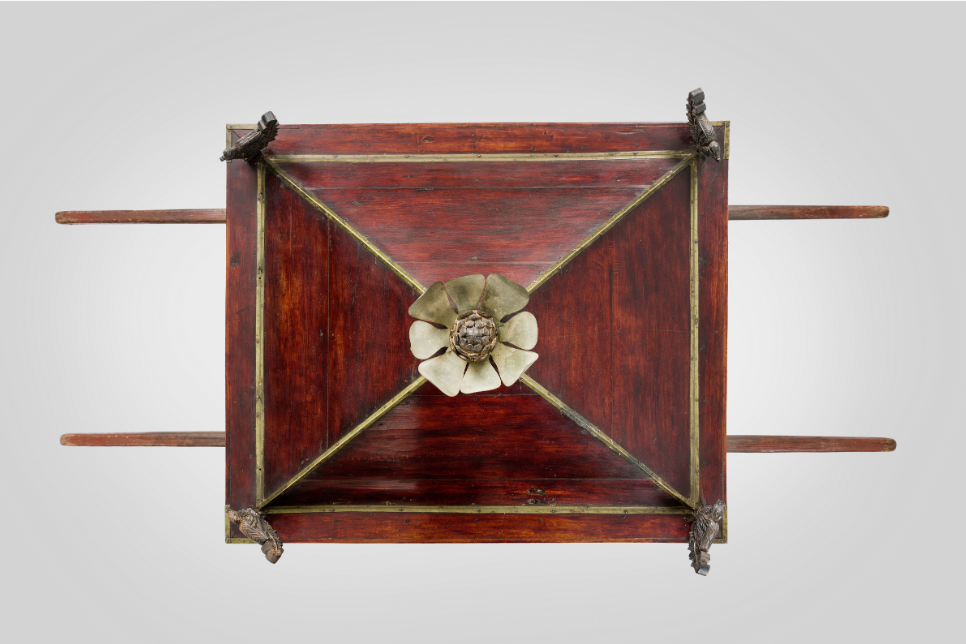


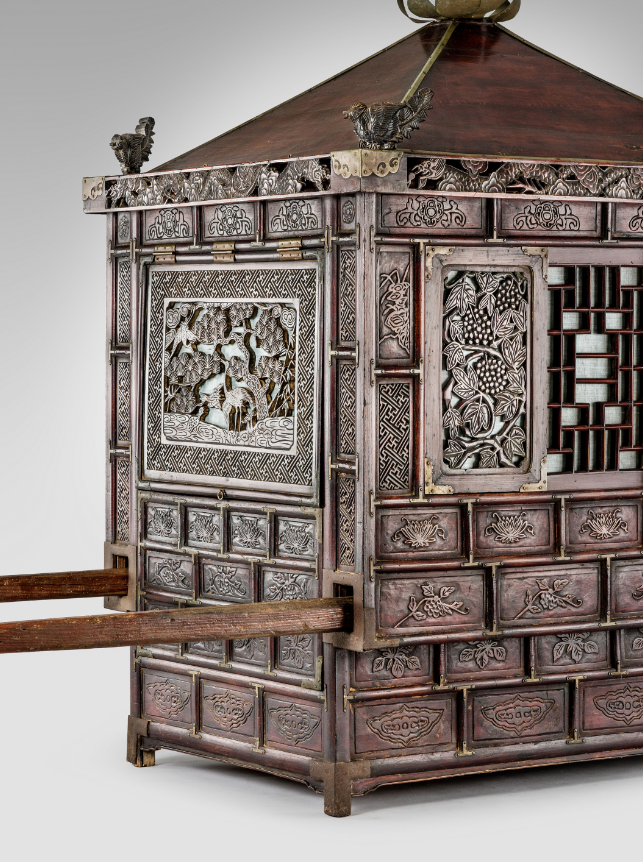

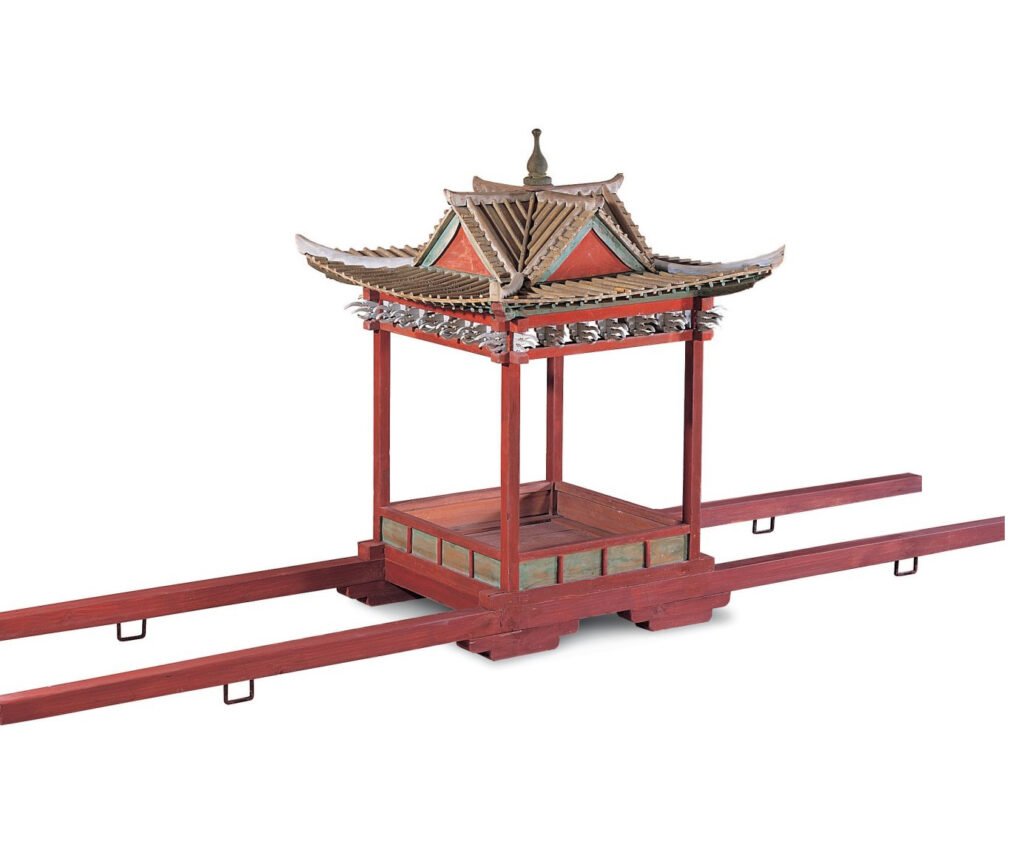
The palanquin was used to carry ritual items such as incense burner, an incense case or a wooden memorial-tablet support. As it was designed after a pavillon, it has four columns supporting a cross-shaped roof with a finial. highly decorative brackets and no walls.
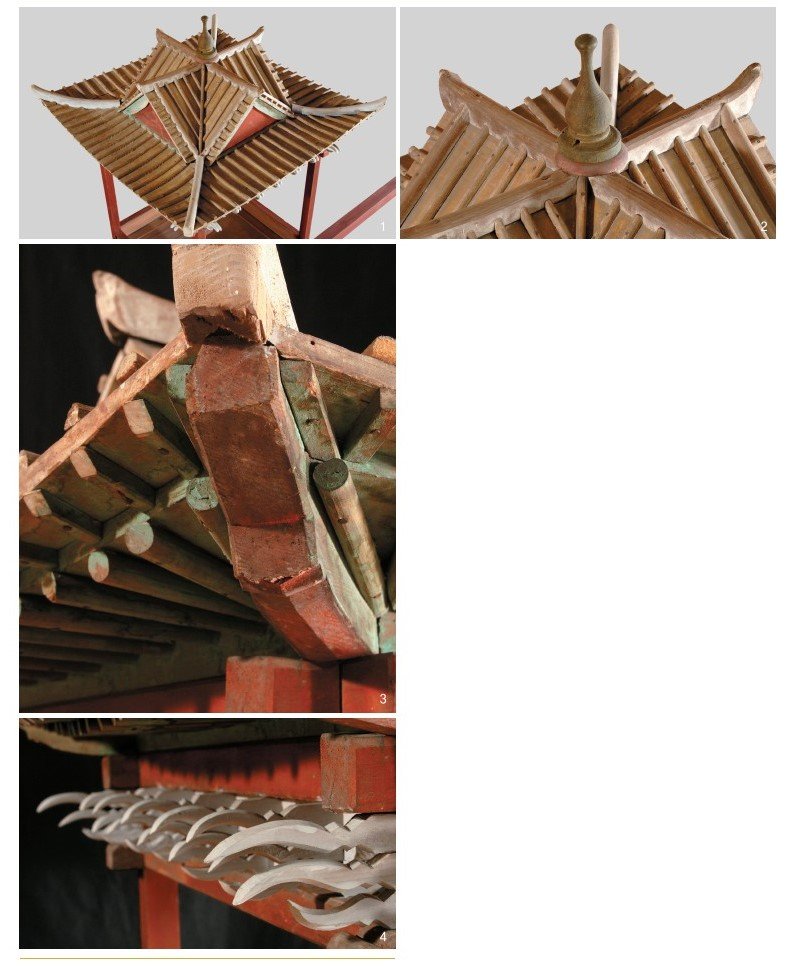

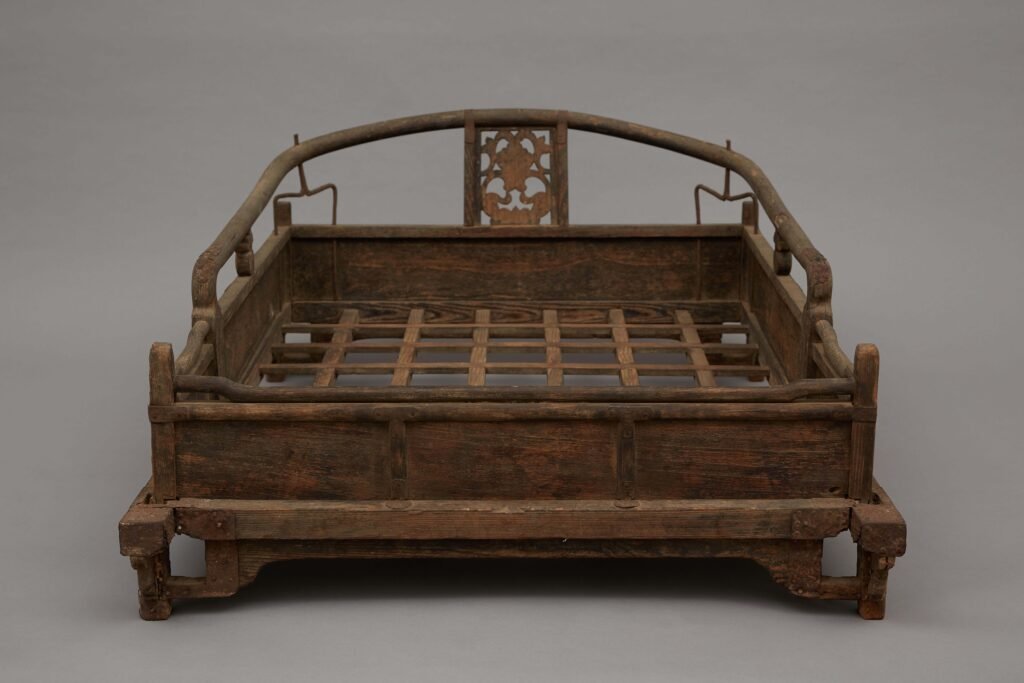
Collection: Cheonan Museum, Korea.
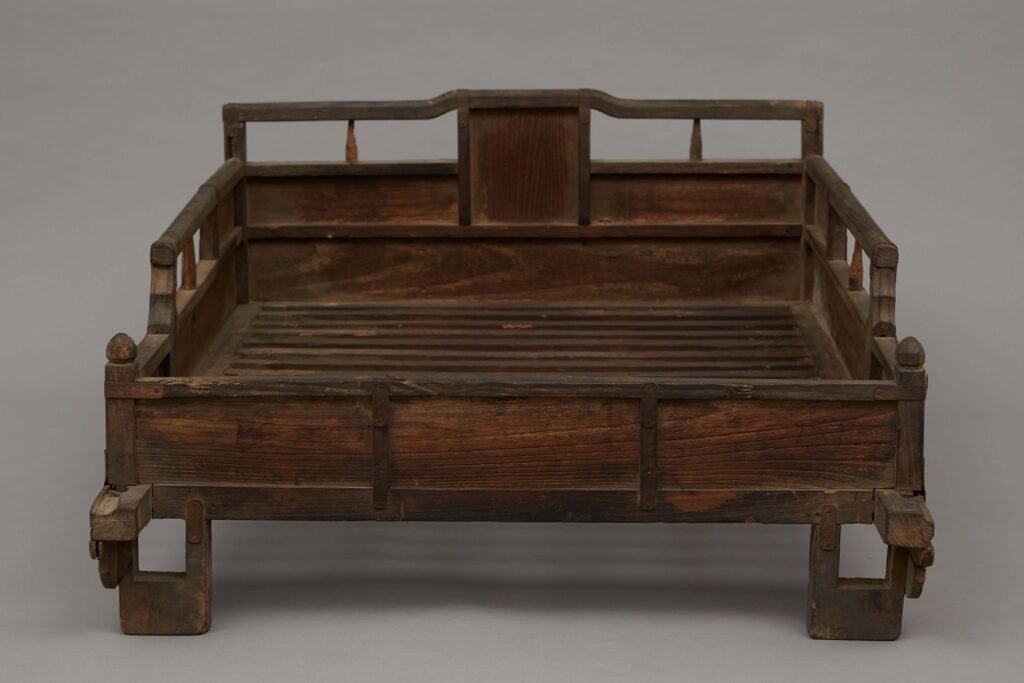
Collection: Cheonan Museum, Korea.

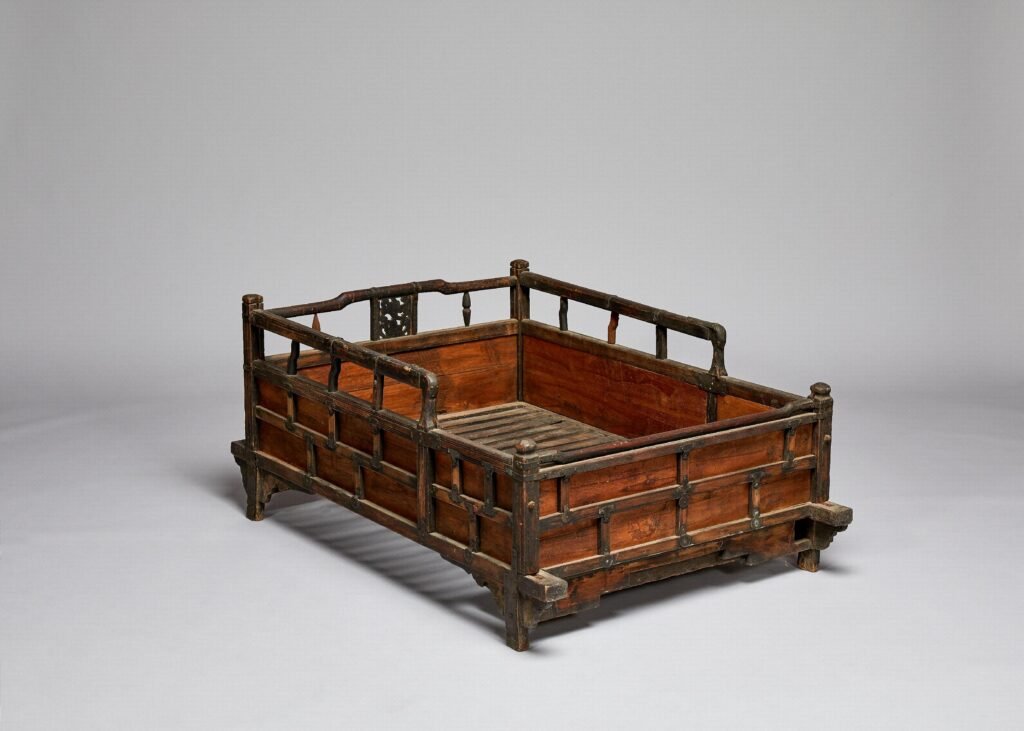
Collection: Gimhae Hallym Museum, Korea.

Collection: Yecheon Museum, Korea.

Collection: BONTE Museum, Seoul, Korea.
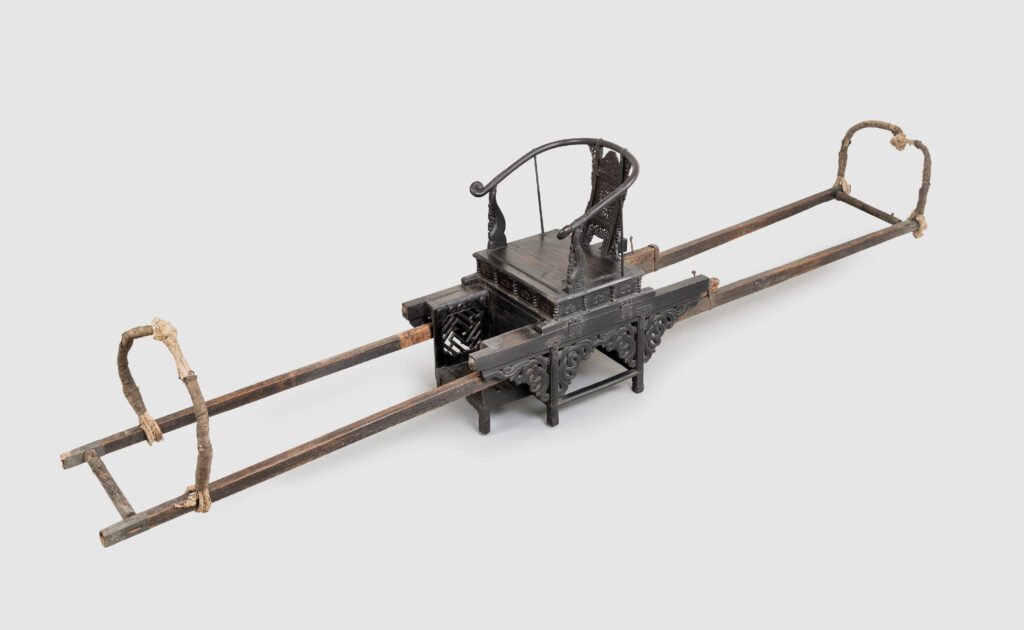
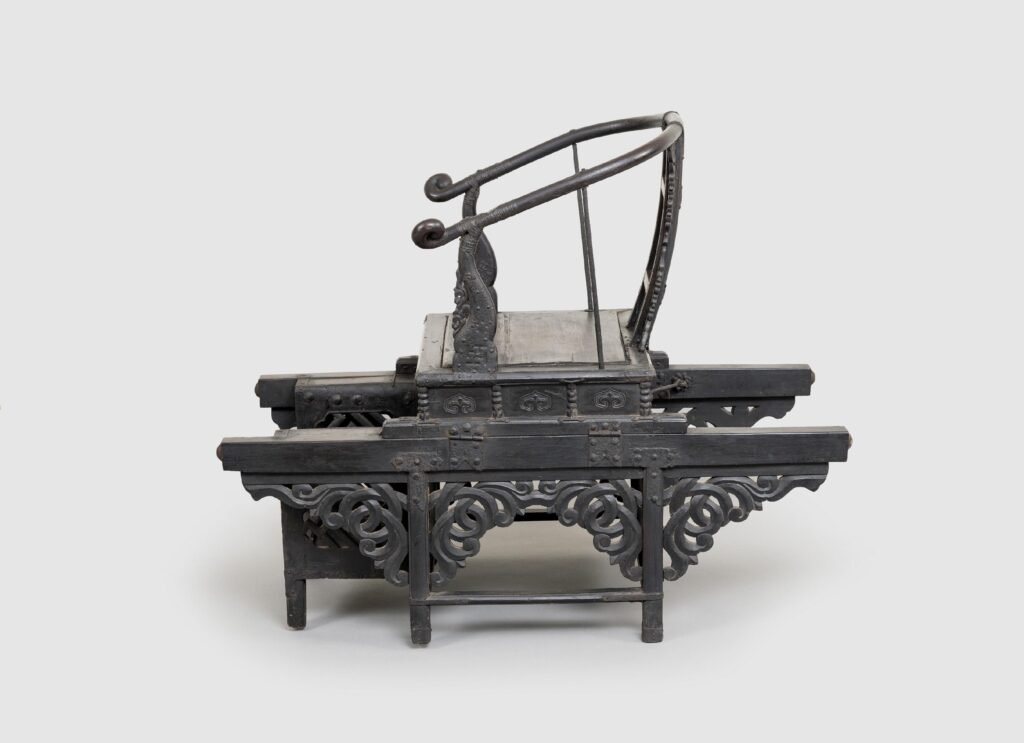
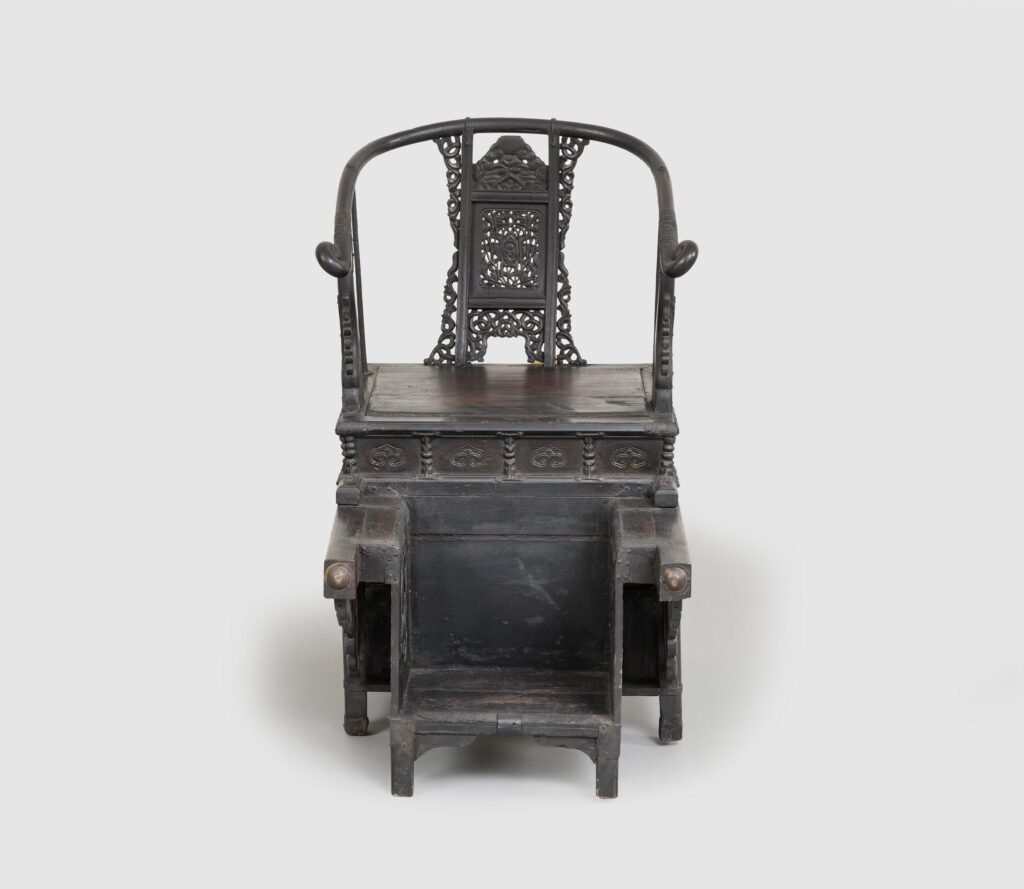
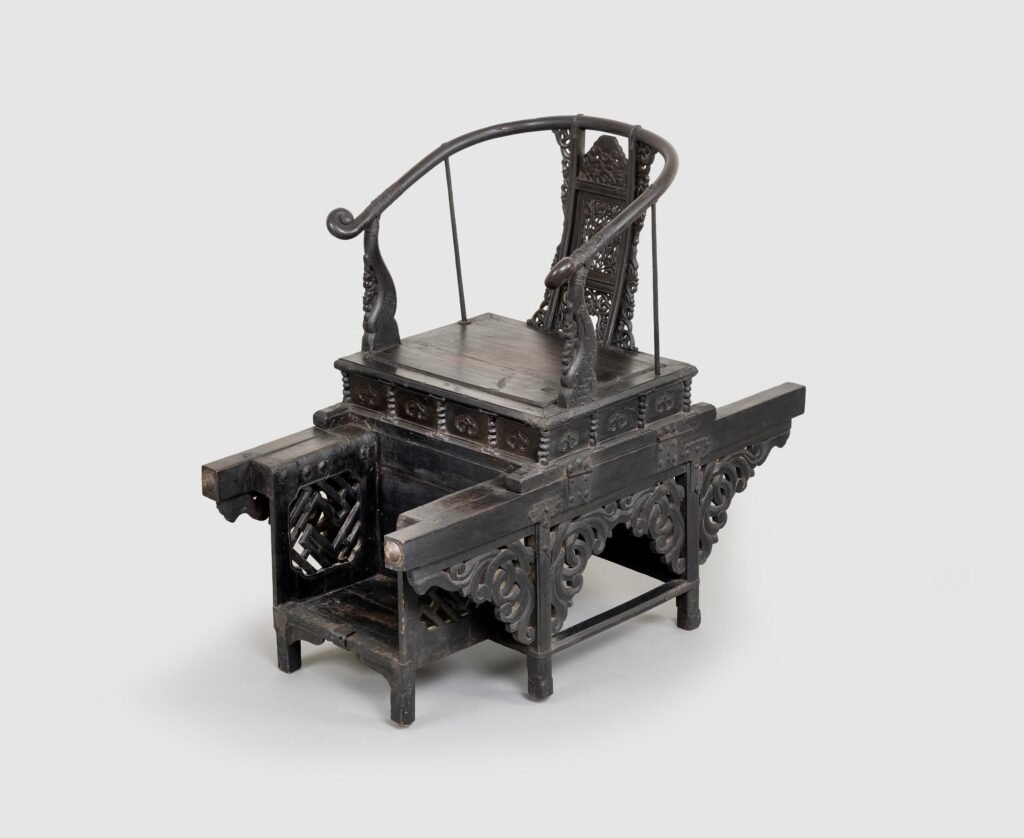
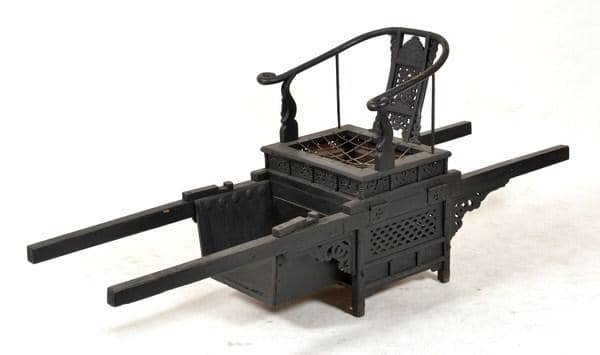
This is a small palanquin that retired officials rode on when they returned to their hometowns.
The palanquin carried by two people was uncovered, with sun, clouds, and arabesque patterns engraved on the back, and ansangmun (眼象文) and flower patterns (flower patterns) on the sides.


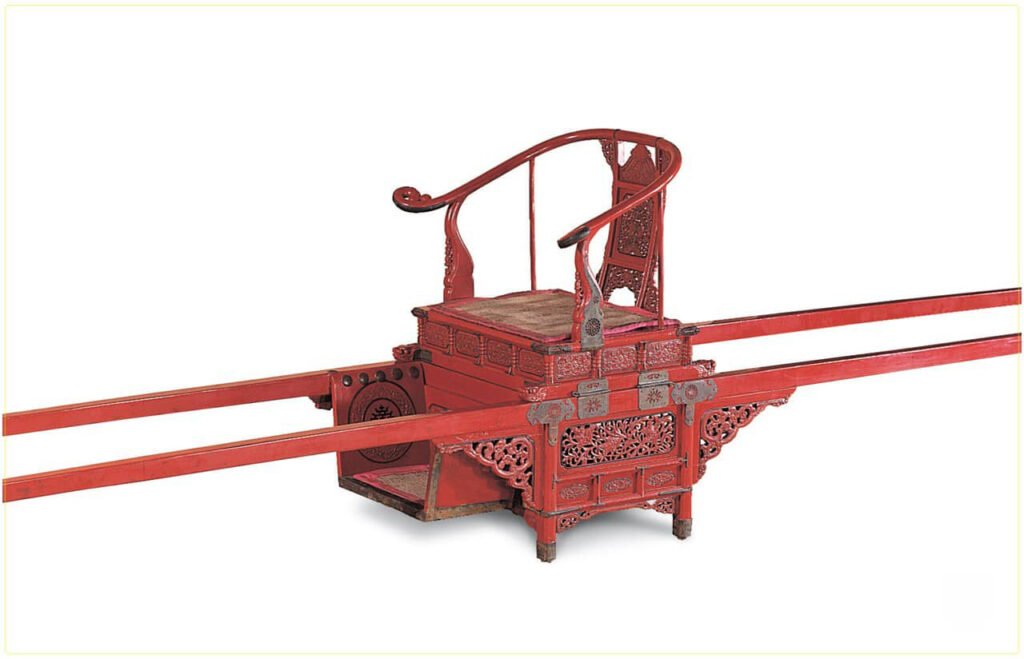
Sedan chairs were usually mounted by ministers, high ranking officials and the king. The king’s sedan chair used inside and outside the court was called “Yeo“. The seat is decorated with landscape, scroll and twin phoenix designs on the back and an openwork scroll design on the sides. The seat and footboard are covered with mats.
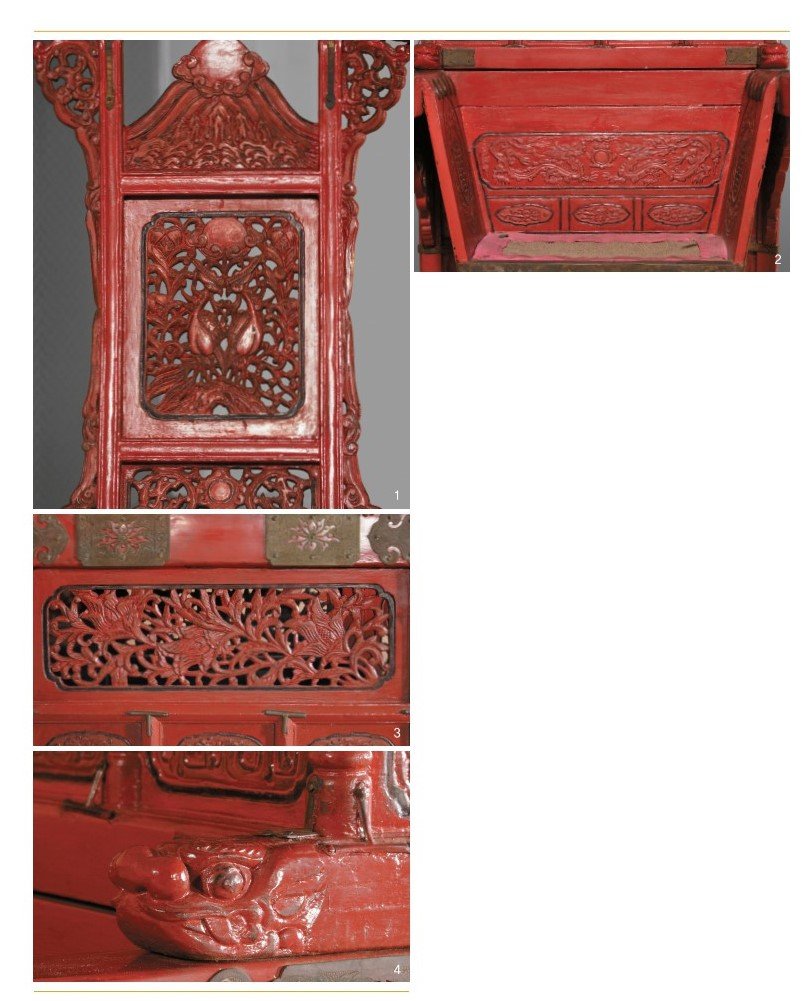




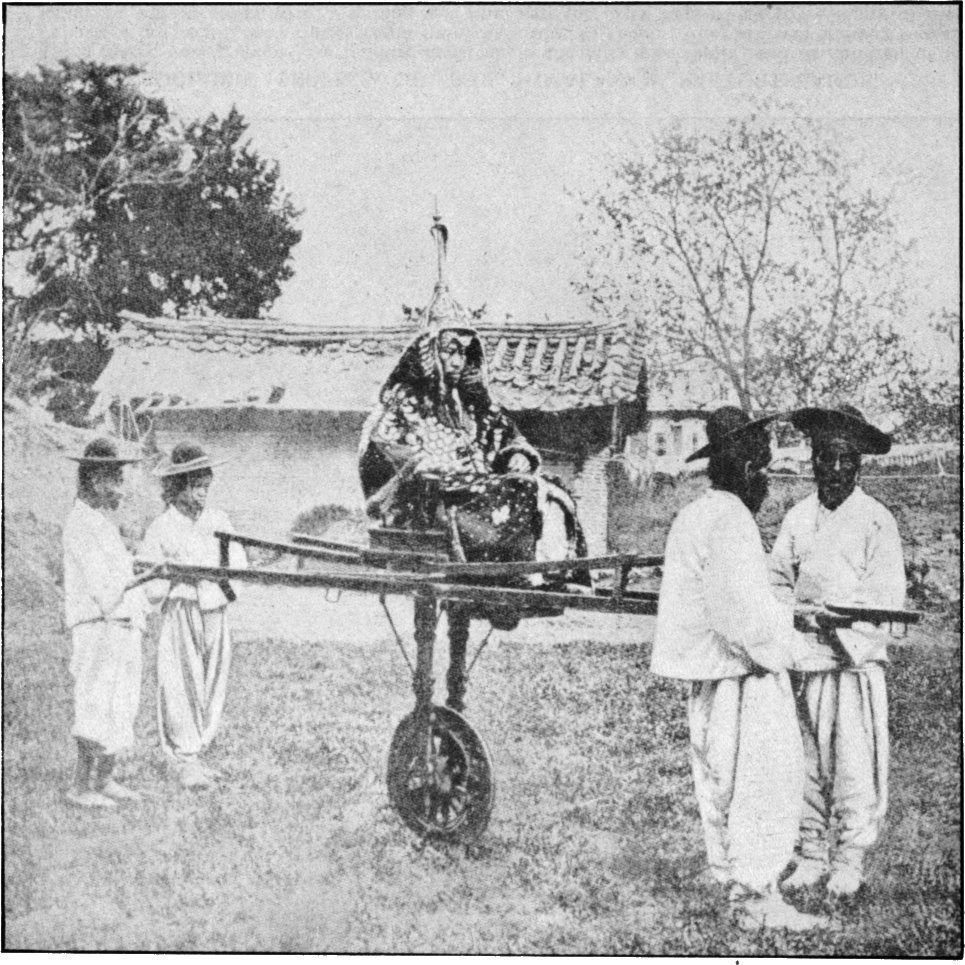
Decoration ran riot in the headgear of officers of the old Korean army, whose service was indeed rather ornamental than military. This melancholy-looking individual, huddled up with the correct air of aristocratic helplessness on his palanquin, is a general officer. The palanquin is fitted with a single wheel which relieves the bearers of something of the weight of so much dignity.
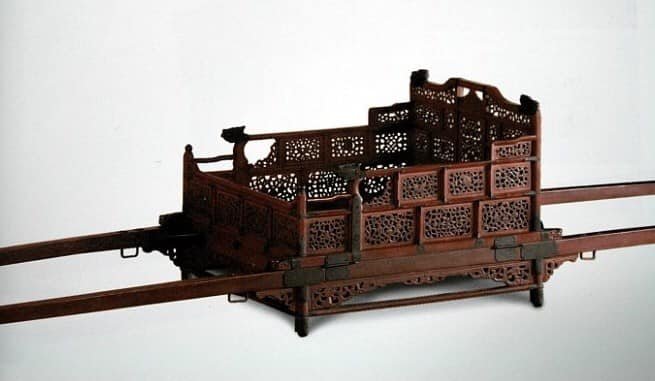
71cm x 63cm x 55cm, Poles: 335cm. This palanquin is lacquered in red overall, decorated with an openwork scroll design and has railings on four sides. All the ends of the back, the bottom of the seat, the handles and the bars, are capped with metal dragon and phoenix heads.

Apart from its use among the nobility and for marriage ceremonies, there was a smaller litter in Korea. This was used during burials to carry tablets and various fabrics symbolizing the spirit of the deceased. They were called “YO YEO” or “YONG YO” in Korean. More information at: The Path to afterlife
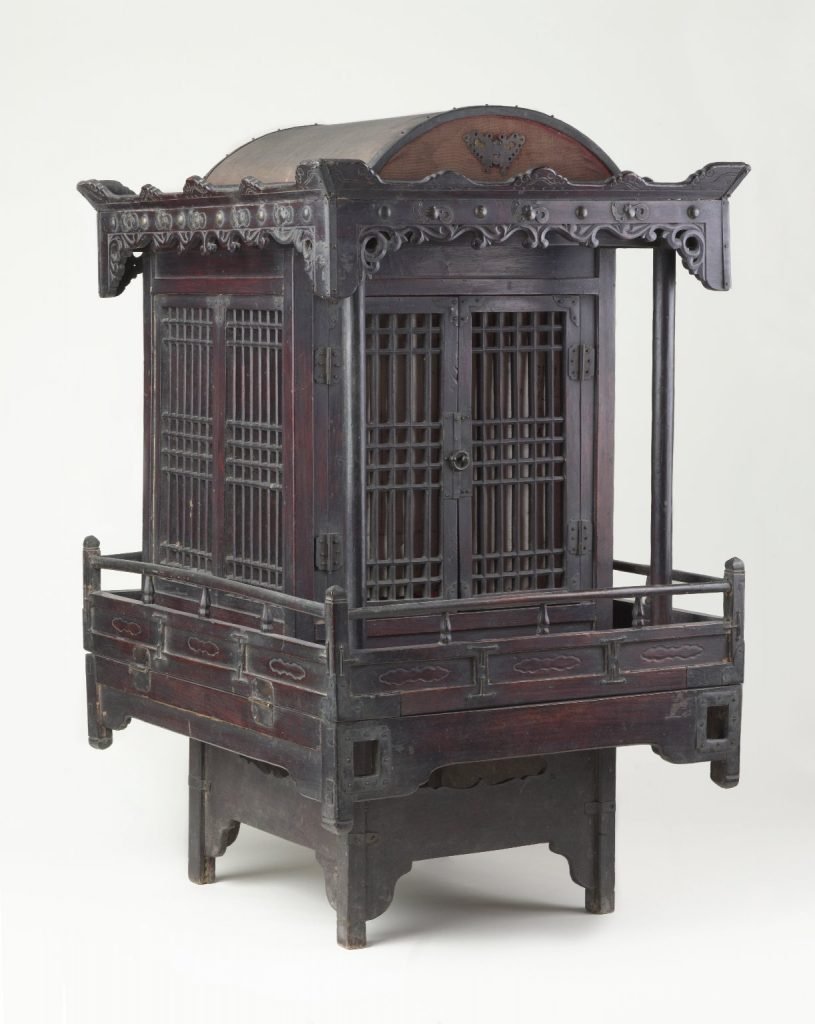
In 19th-century Korean funeral processions, small palanquins were used to transport tablets representing the spirit of the deceased. These tablets would be carried behind the coffin to the cemetery, allowing the deceased to be present at their own funeral. They would then travel to their final home in a family shrine and become the subject of ancestor worship.
Collection of the Brooklyn Museum.
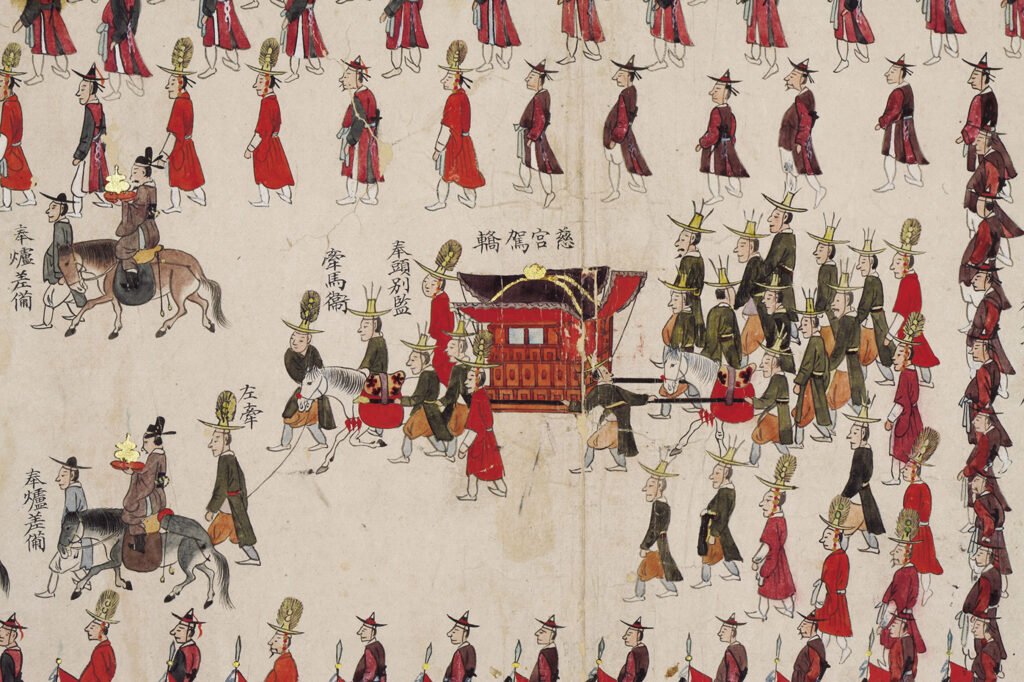

PALANQUINS IN VARIOUS COLLECTIONS.




Collection: National Folk Museum, Seoul.




Collection: National Folk Museum. Seoul.








Collection: Sangju Museum





The palanquin was utilized by government officials and the yangban class of the Joseon Dynasty for travel, and also by commoners during weddings. This specific palanquin was used during wedding ceremonies for the bride’s procession. Its roof is adorned with animal skin, symbolizing protection against evil spirits to safeguard the bride.




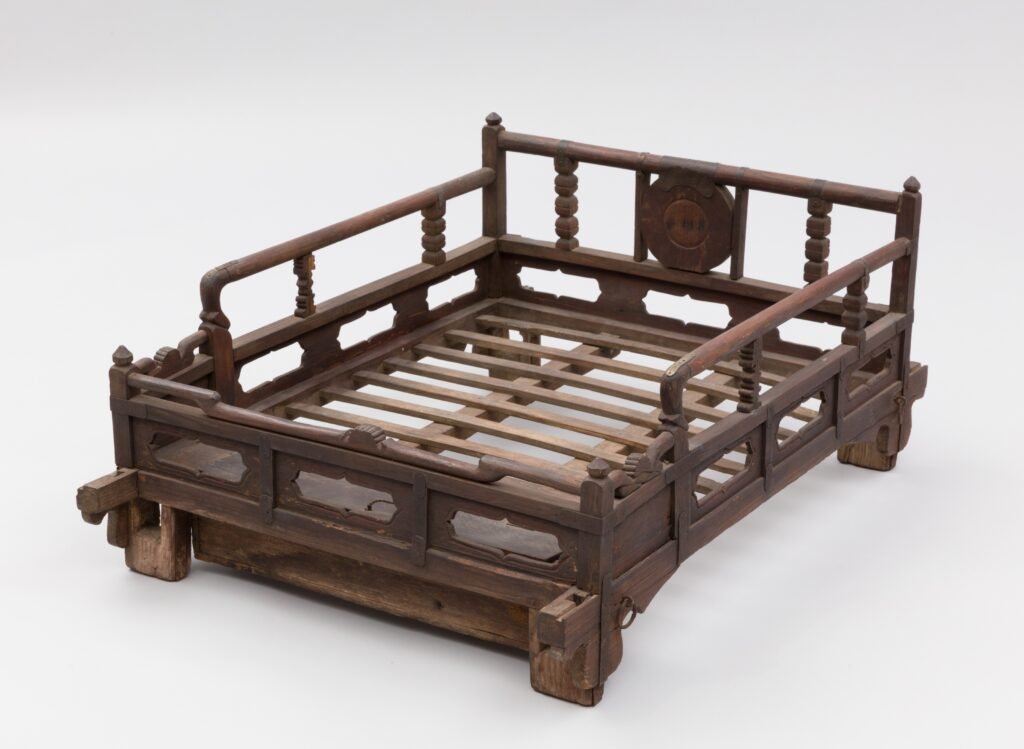



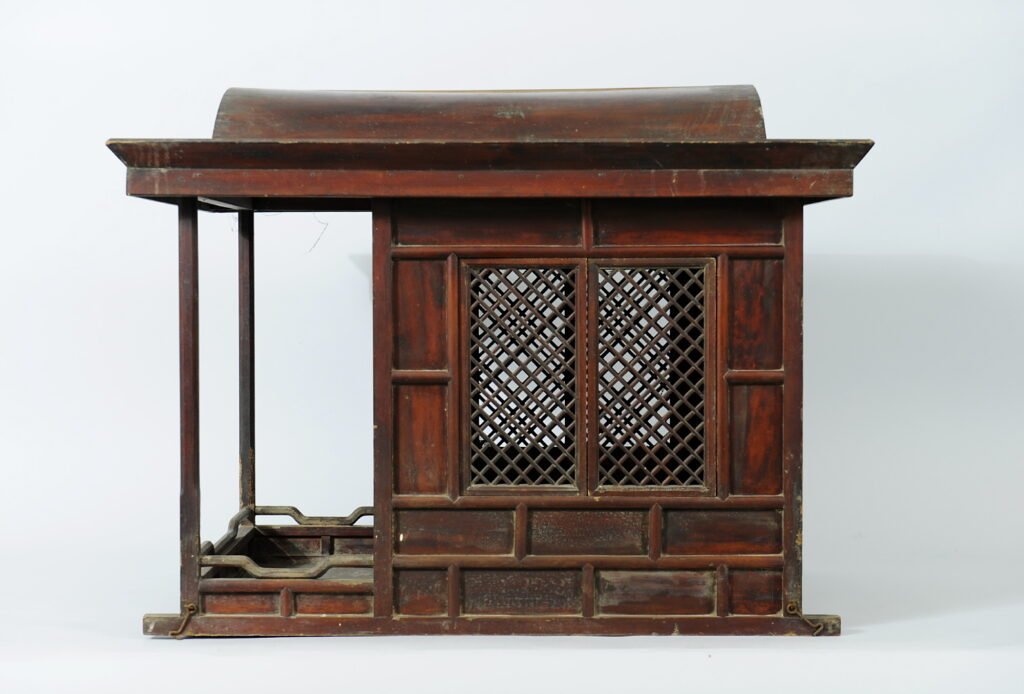



I have a very nice mid 19th Century Palanquin that I inherited around 17 years ago. In addition I have several pieces of art from the early 20th Century and other pieces of Korean pieces I would like to sell. I hardly know where to began. I was given these pieces at the time of my aunts death in 2007. . Is there someone who can advise me?
Dear Andrew,
First, could you send me photos with some information such as dimensions and your location by email to: tortuebangkok@gmail.com. Best regards. Yves